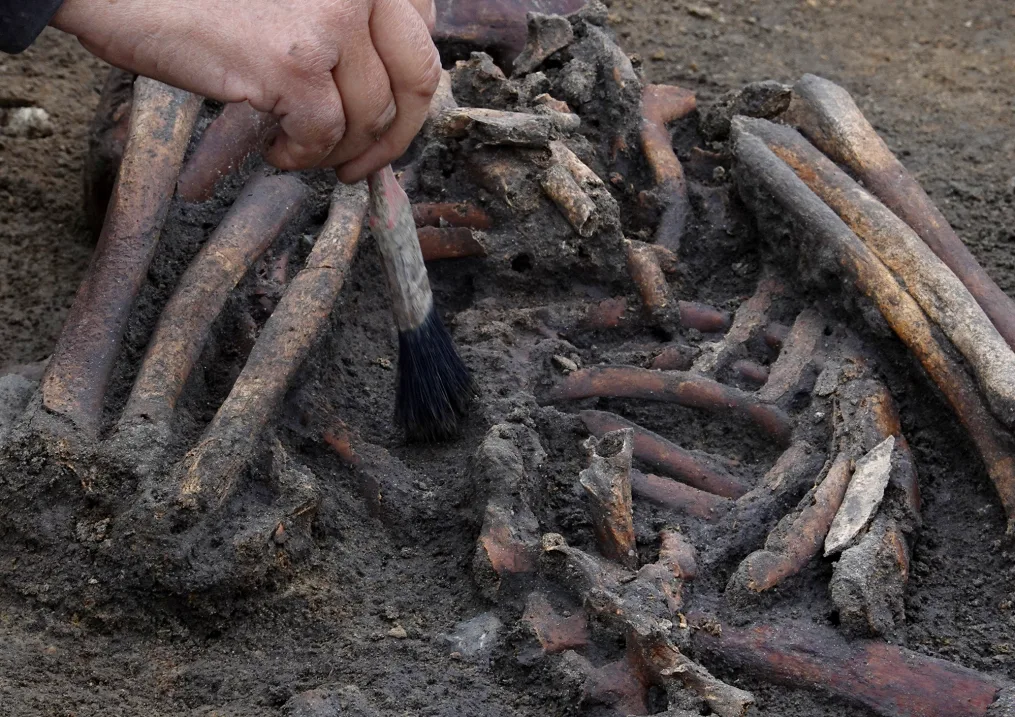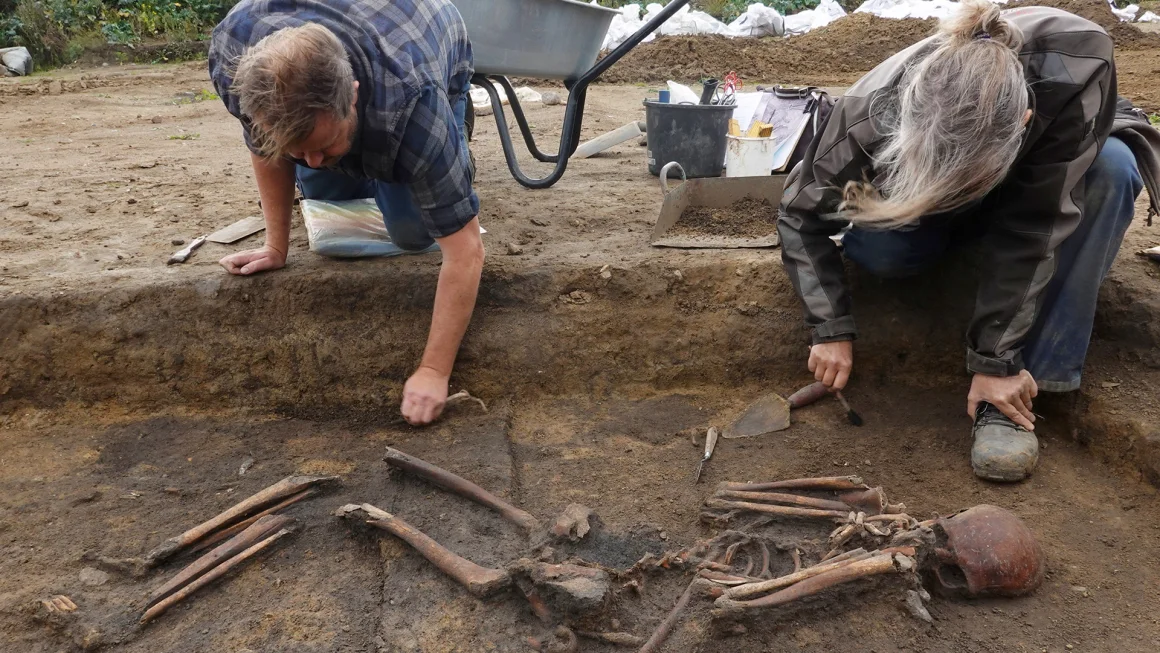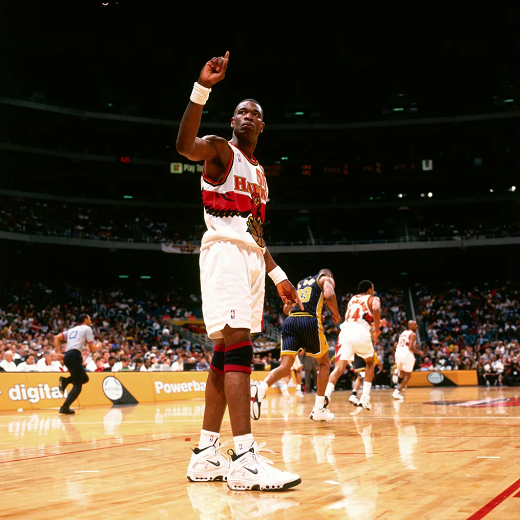Archaeologists in Denmark have uncovered over 50 “exceptionally well-preserved” Viking-era skeletons at a large burial site in Åsum, in the eastern part of the country. The site, which spans about 21,500 square feet and dates back to the 9th and 10th centuries, has provided a rare glimpse into Viking history due to the remarkable preservation of the remains.
Michael Borre Lundø, an archaeologist and curator at Museum Odense, explained that it is uncommon to find such well-preserved Viking remains. Typically, only a few teeth or bone fragments are found. However, the unique conditions at Åsum, with its chalk-rich soil and high natural water content, helped preserve the skeletons by slowing down decomposition.
Artifacts discovered alongside the skeletons indicate that these Vikings were involved in extensive trade networks that reached beyond Denmark’s borders. Items such as a bronze three-lobed brooch, a red glass bead, and a rock crystal not native to Denmark suggest the presence of international trade routes. One notable find was a woman buried in a wagon, likely used as a coffin, adorned with a glass bead necklace, an iron key, and a knife with a silver-threaded handle. The skeletons were exceptionally well preserved due to the chalk and water in the ground. Tom Little/Reuters
The skeletons were exceptionally well preserved due to the chalk and water in the ground. Tom Little/Reuters
The burial site confirms Åsum’s historical significance as a geographical point crucial to the urban development that eventually led to the formation of Odense, Denmark’s third-largest city. Archaeologists continue to excavate parts of the site, and the skeletons and artifacts are now being transferred to Museum Odense for further analysis. Researchers in Copenhagen aim to extract DNA from the remains to gather insights into the people’s ages, diseases, and familial connections.
This discovery offers a unique opportunity for scientific analyses, which may reveal more about the general health, diet, and origins of the Vikings buried at Åsum.






